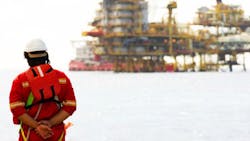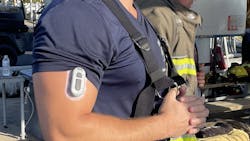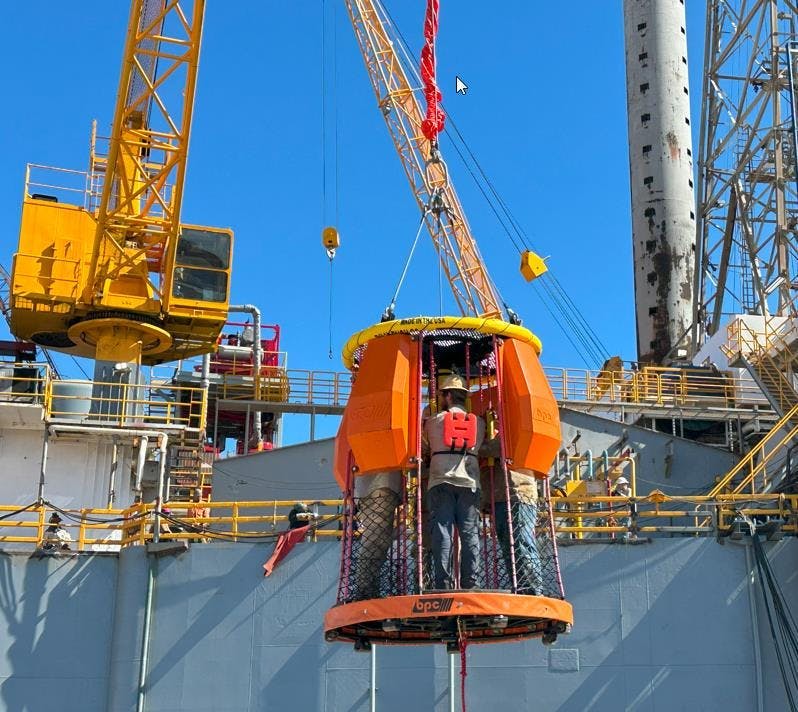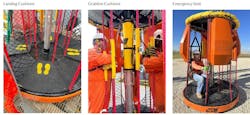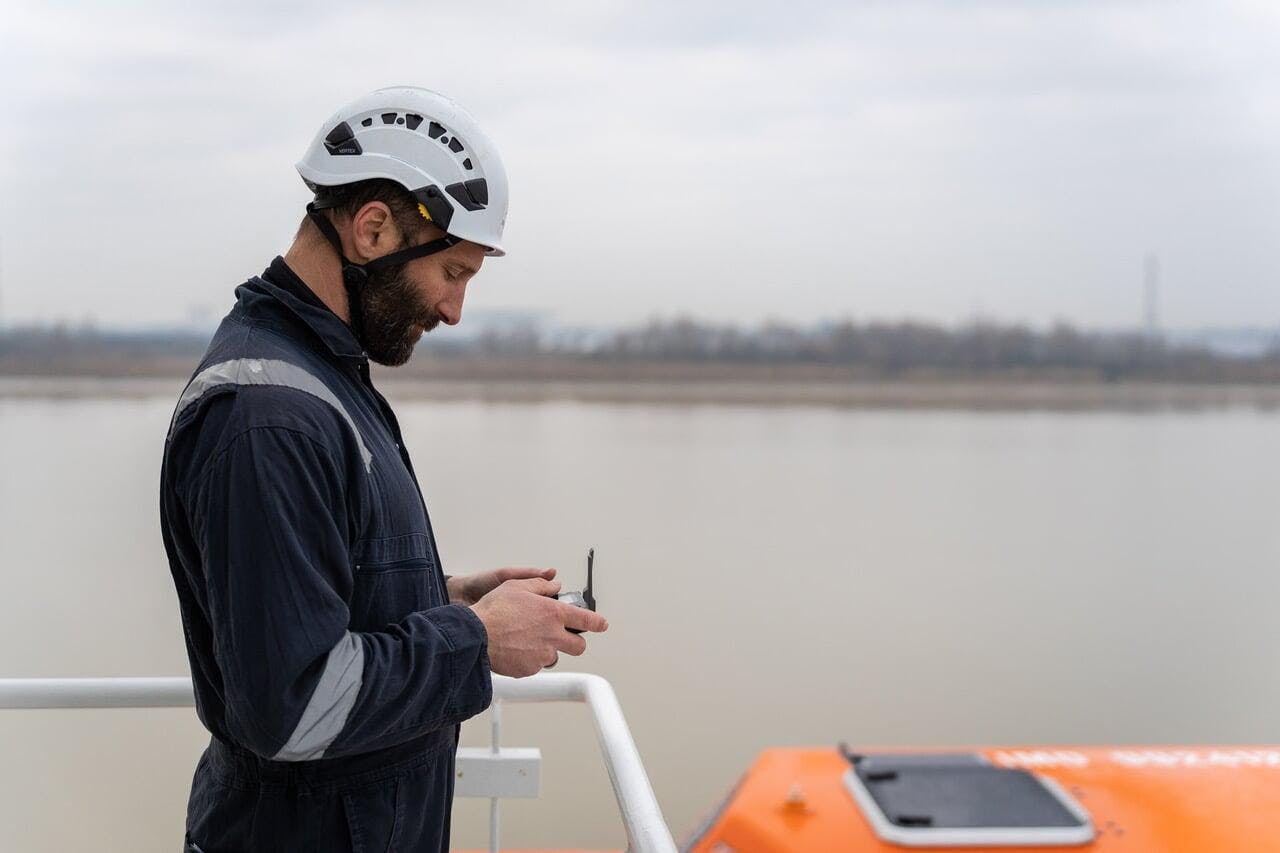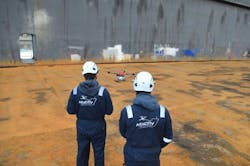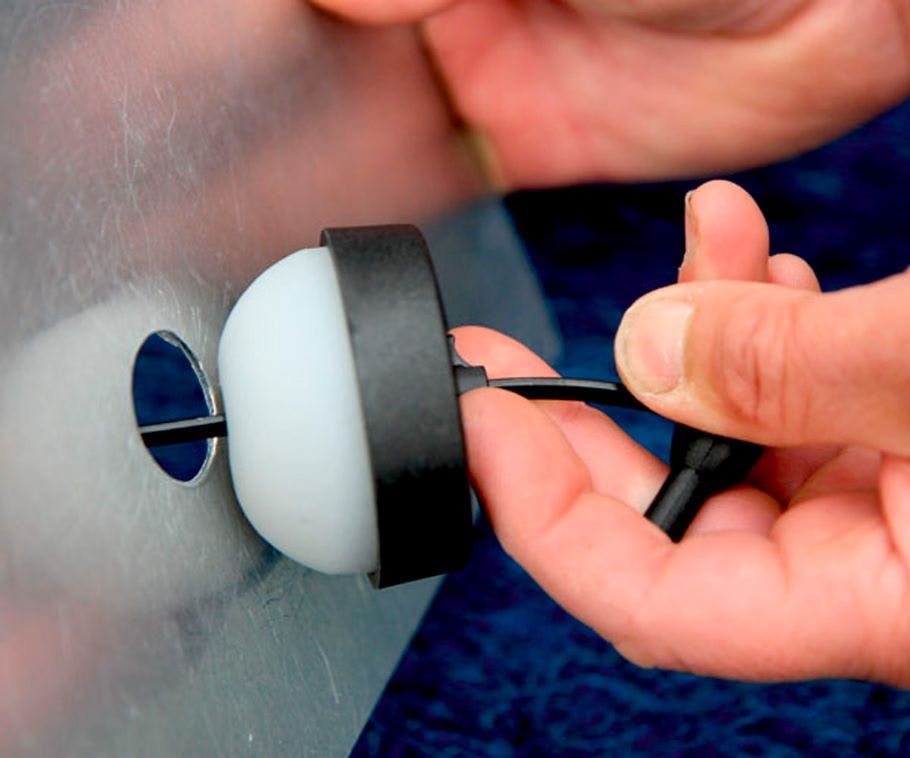Safety systems and PPE advancing in the offshore oil and gas industry
By Ariana Hurtado, Editor and Director of Special Reports
Offshore oil and gas operations can prove challenging with harsh environments, heavy equipment and sometimes difficult engineering, inspection and maintenance tasks at hand. It's nothing new that companies continue to seek advancements in technology, systems and processes that will increase safety for both personnel and the environment. The following is a sampling of some of the latest safety systems and personal protective equipment (PPE) that is being offered in the offshore energy sector for its workers and the overall increase of HSE efficiency.
Sensors provide rehydration strategies, real-time alarms
Epicore Biosystems develops sweat-sensing wearables. Its new Connected Hydration is a sweat-sensing wearable biosensor and cloud analytics technology that measures sweat loss, sodium loss, skin temperature and movement to provide actionable rehydration strategies in real time to workers ahead of adverse dehydration events, according to the company. The technology enables personnel to quantify their hydration biomarkers and create actionable routes to rehydration and recovery.
Chevron health and safety teams have deployed Epicore’s Connected Hydration across multiple work sites and conditions over the past two years, leading to its commercial launch in April 2024. Chevron Technology Ventures also invested in Epicore to support the development and commercialization of Connected Hydration.
In July, Epicore secured a three-year master services agreement with Chevron Technical Center to equip Chevron’s industrial frontline workers with its Connected Hydration technology. The first deployments were scheduled to start in the US this summer.
Autonomous tools reduce personnel needs on site
SLB's Neuro autonomous technology—which was recently recognized with an OTC Asia 2024 Spotlight on New Technology Award—was designed to increase the efficiency of E&P operations and reduce human intervention and the carbon footprint. The Neuro tools entail intelligent planning and execution as well as surface and downhole automation.
"These capabilities have enabled autonomous operations across the well life cycle—improving how the industry constructs wells, proves and connects reservoirs, sustains production, maximizes recovery, and decommissions wells—laying the groundwork for fully autonomous operations in the near future," SLB states on its website.
Neuro solutions integrate technology that eliminates the need for engineers to travel to well sites. Plus, users are able to access data 24/7 from any location. "By reducing personnel on the rig site, associated travel (even travel to a workplace), HSE risks and environmental impact diminish equally," SLB added.
Personnel transfer device adds new safety features
The Billy Pugh Co. (BPC) released the X-1000 personnel transfer device in June. The company says the device incorporates new safety features following extensive customer engagement to determine what riders value in safety and comfort during transfer. The feedback the research team received was that the most preferred safety capabilities included quick egress and the ability for riders to stand during transfers and face inward, with a soft takeoff/landing.
The X-1000 features a four-person capacity, working load limit of 1,200 lb and weight of 800 lb, and it is ASME B30.23-2022 compliant and EN 14502-1 compliant. The device has a self-righting flotation system as well as a passive heave compensation for softer pickup/takeoff. In addition, individual standing cushions provide a softer landing, and there is enhanced side impact protection on the outer perimeter as well as grabline cushions for improved rider comfort. The floor grating also offers improved viewing of landing for the rider. Moreover, X-1000 has a removable suspended seat option for emergency use and accommodates a stretcher in addition to the emergency seat.
Drones take the risk, not people
MaDfly drones focus on inspection services with the aim of preventing accidents and reducing unnecessary risks. The company's drones can reach offshore environments, confined spaces (e.g., cargo, storage, tanks) and have high access (e.g., cranes, turbine blades, etc.). Previous site inspections have included vessels, wind farms, offshore platforms, ports and storage sites.
Without the use of drones, high-area inspections would require scaffolding, rope access or cherry pickers, which can be dangerous, costly and/or time-consuming, the company explains on its website. MaDfly says the use of drones for visual inspection in high areas eliminates these risks, increasing safety and efficiency. In addition, drones can be deployed quickly and complete inspections quicker, thus reducing downtime of assets.
Late last year, MaDfly performed tanker inspections with thickness measurements conducted by drones offshore Africa. The company successfully tested its first drone-based thickness measurements in a crude oil tank on an FPSO in Angola, providing access to confined and hard-to-reach areas.
The company also provides 3D modeling, which entails a structure, property or object being recreated in a digital 3D format from pictures or LiDAR taken by a drone. The company says this virtual copy is "extremely accurate" and that an "incredibly realistic and high definition model" is produced.
Lastly, the drones can provide aerial thermography, which is an infrared imaging process that allows the evaluation of heat emission by an object. This analysis alerts users to asset defects and/or thermal leaks.
Seal stops leaks, safeguards employees
The company says RuptureSeal can safely close breaches, minimize damage, protect the environment, safeguard employees and avoid potentially thousands of dollars in spill mitigation. Deployment of this leak sealant requires no additional tools. The worker would simply compress the silicone pad into the rupture, pull back easily on the handle, and the seal is mechanically fastened in place, even on rough, unclean and splintered surfaces, according to the company.
About the Author
Ariana Hurtado
Editor-in-Chief
With more than a decade of copy editing, project management and journalism experience, Ariana Hurtado is a seasoned managing editor born and raised in the energy capital of the world—Houston, Texas. She currently serves as editor-in-chief of Offshore magazine, overseeing the editorial team, its content and the brand's growth from a digital perspective.
Utilizing her editorial expertise, she manages digital media for the Offshore team. She also helps create and oversee new special industry reports and revolutionizes existing supplements, while also contributing content to Offshore magazine, its newsletters and website as a copy editor and writer.
Prior to her current role, she served as Offshore's editor and director of special reports from April 2022 to December 2024. Before joining Offshore, she served as senior managing editor of publications with Hart Energy. Prior to her nearly nine years with Hart, she worked on the copy desk as a news editor at the Houston Chronicle.
She graduated magna cum laude with a bachelor's degree in journalism from the University of Houston.
